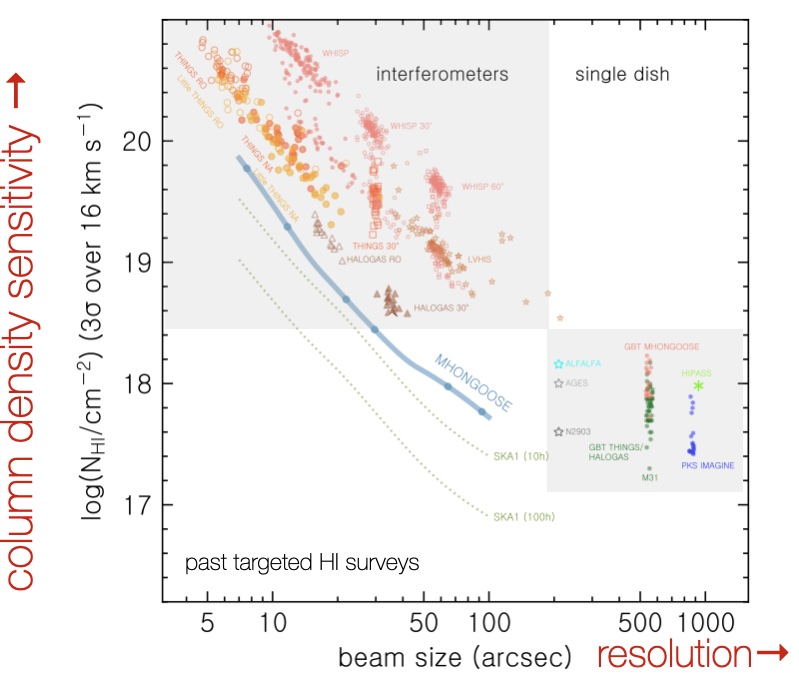We observe a total of 30 galaxies, of various Hubble types, masses and inclinations. The sample is described here.
We are achieving our desired goal to detect HI column densities of 1.25 · 10¹⁹ cm⁻² at 5σ over 16 km s⁻¹ at 30” resolution. At a resolution of ∼90", this enables detections at the ∼5 · 10¹⁷ cm⁻² level (3σ). By using stacking of HI profiles these limits can be lowered further. Optimal smoothing to 16 km s⁻¹ channels would increase sensitivities by a factor √(16/5).
The
figure on this page compares the sensitivity of MHONGOOSE with those
of existing HI surveys. It is clear that MHONGOOSE probes the low column
densities in galaxies at resolutions that will only be surpassed by the
SKA.
